Baseball History Comes Alive Now Ranked #2 by Feedspot Among All Internet Baseball History Websites and Blogs!
Guest Submissions from Our Readers Always Welcome!
Scroll Down to Read Today’s Essay
Subscribe to Baseball History Comes Alive for automatic updates (sign-up block found in right side-bar)
As a Free Bonus for subscribing, you’ll get instant access to my two Special Reports: Memorable World Series Moments and Gary’s Handy Dandy World Series Reference Guide!
Hank Gowdy and the 1924 World Series Photo Gallery
Click on any image below to see photos in full size and to start Photo Gallery:
World Series “Goats” Part Five:
THERE ARE ERRORS…AND THEN THERE ARE ERRORS!!
Hank Gowdy and the 1924 World Series
“The mask held me like a bear claw,” –Hank Gowdy, recalling his unfortunate incident in the 1924 World Series which led to Washington’s winning run.
World Series Errors Can Be Magnified!
I’ll continue with Part Five of my ongoing series on World Series “goats.” Previous essays in this series have featured the post-season travails of Fred Snodgrass, Heine Zimmerman, and Ernie Lombardi. I also featured Fred Merkle, although his miscue didn’t occur in the World Series but led to the loss of a pennant.
Today I’ll examine the unfortunate turn of events that tarnished the career of a fine catcher, Hank Gowdy, considered at the time one of the best in the business. That is, until the 1924 World Series rudely intruded on his reputation…
The 1924 World Series
The 1924 World Series was won by the Washington Senators, four-games-to-three over John McGraw’s New York Giants. The Senators were making their first World Series appearance; while for the Giants, it was their fourth straight trip to the Fall Classic.
Game Seven, played on October 10 at Washington’s Griffith Stadium in front of 31,667 fans, went 12 innings and is considered by many to be the most exciting Game Seven ever. It holds the record as the longest Game Seven (by innings) in World Series history. No less than 15 future Hall-of-Famers were on the field for the series (see list in comments below).
Fortunately for Gowdy, his critical Game Seven miscue has been largely
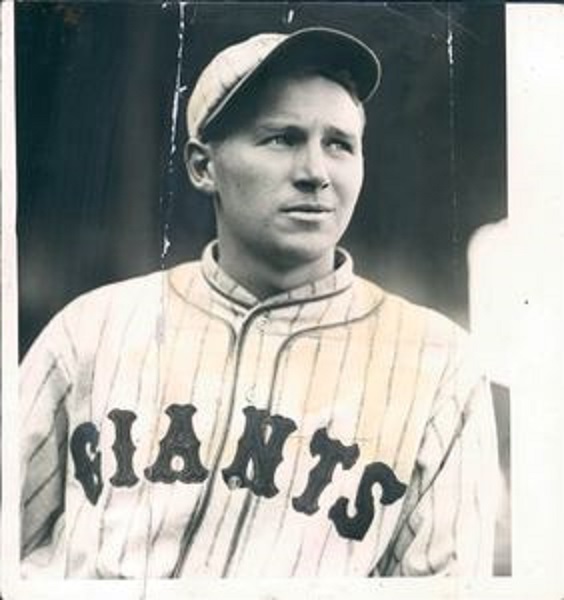
overshadowed by the travails of his teammate, Freddie Lindstrom. As such, the game has gone down in baseball lore as the “Freddie Lindstrom Pebbles Game.” Hank rarely gets a mention anymore. Here’s what happened:
The Decisive Game Seven
The series was tied at three games apiece. The Giants, with Jack Bentley on the mound, were leading 3-1 as the bottom of the eighth unfolded. They were just six outs away from their third World Series championship in four years. Washington loaded the bases with two out. Senators’ player-manager Bucky Harris then hit a sharp but routine ground ball headed toward the Giants’ 18-year old rookie third baseman, Freddie Lindstrom. It apparently hit a peddle and took a high hop over Lindstrom’s head, sailing into left field. No error was charged, but two runners scored to tie the game.
The great Walter Johnson, making his first World Series appearance at the age of 36, was brought in to pitch the ninth. The Big Train was exhausted, having started and lost Games One and Five. But Johnson “reached deep” and stayed in the game through the extra innings. He allowed runners in every inning from the ninth through the twelfth, but he kept the Giants from scoring. So it was still 3-3 when Washington came up in the fateful bottom of the twelfth.
Hank Gowdy’s Miscue
Hank Gowdy had caught every inning of every game in this series and was still behind the plate as the game moved into the twelfth. With one out, Washington catcher Muddy Ruel, a dreadful 1-for-19 in the Series, hit a high foul popup right behind the plate. Gowdy got a bead on the ball – as a catcher does a thousand times over his career – and tossed his mask aside. But he didn’t toss it far enough. As luck would have it, he stepped directly into the darn thing, trapping his foot. He struggled as he got under the ball attempting to make the catch, while also struggling to shake the mask free. Unfortunately, it fell uncaught to the ground.
It would soon prove to be a very costly error…
Don’t Give a Major Leaguer a Second Chance!
As so often happens when a major leaguer is given a reprieve, Ruel then drove a double down the left-field line. McGraw must have been thinking “It’s deja Vu all over again,” recalling the 1912 World Series. That time the great Tris Speaker came through with a critical hit after a Giant misplay, also on a foul ball, gave him a second chance.
The next batter, Walter Johnson – a good-hitting pitcher – reached on another error, with Ruel holding at second. Center fielder Earl McNeely then drove an
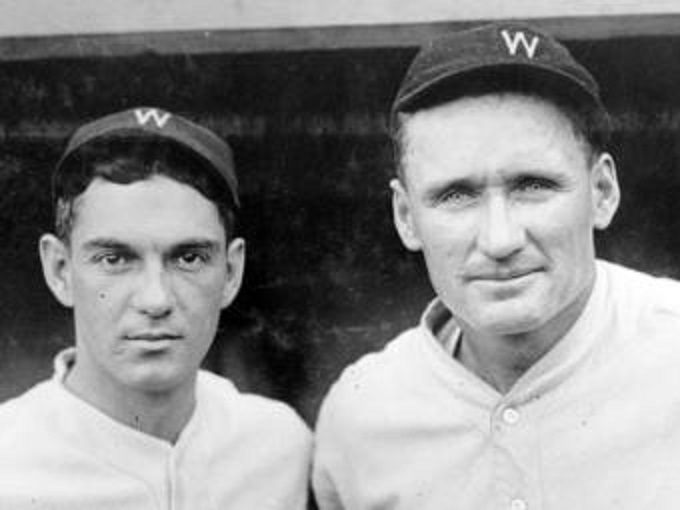
identical grounder straight at Lindstrom who had visions of an inning-ending double play. But instead, this ball, too, hopped over his head into left field.
Ruel, one of the slowest runners in the game, chugged around third while Giants’ left fielder Irish Meusel fielded the ball. For some mysterious, unexplainable reason, Meusel decided he had “no play.” Instead of throwing home in an attempt to prevent the series-winning run from scoring, Meusel just tucked it “into his hip pocket” and trotted to the dugout. The slow-footed Ruel crossed home plate without a play. The run gave Washington its only World Series championship during its tenure in the nation’s capital.
Who’s To Blame, Lindstrom, Gowdy…Or Meusel?
Newspaper accounts the next day focused on the bizarre coincidence of two ground balls hopping over Lindstrom’s head. A day later, though, the focus changed. The New York Daily News now observed:
“Gowdy’s failure to catch an easy foul prolonged Ruel’s time at bat and gave him a chance to hit the double that subsequently blossomed into the run that won the Series.”
New York sportswriters had a field day with Gowdy’s error. Perhaps recalling Fred Snodgrass’ “$30,000 Muff” in 1912 (and the inflation of salaries over the years), this became Gowdy’s “$50,000 Muff.”
Hank Gowdy’s Career
Hank had a fine 17-year major league career (1910-1930) in which he hit .270, with 21 home runs, 322 RBIs. He twice led the National League in caught-stealing percentage. His 52.58% career mark ranks him sixth in major league history.
His reputation as a defensive stand-out is enhanced because of the era in which he played. In the Deadball Era, catchers played a huge defensive role, given the large number of bunts and stolen base attempts, as well as the difficulty of handling spitball pitchers who dominated many staffs. Gowdy was considered one of the best.
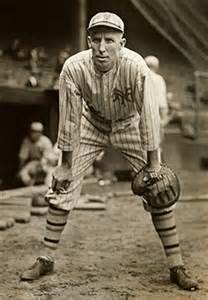
He was also a true American patriot, being the first ballplayer to enlist in the army in World War I. A few months later, he found himself in the trenches in France. Later he was back in the army during World War II, possibly the only player to serve in both wars.
Hank Becomes A World Series “Goat”
Hank Gowdy’s error was costly indeed, proving that errors made in the World Series can be greatly magnified. They’re hard to overcome, and can tarnish the reputation of a good ballplayer. Just think of Ernie Lombardi, Mickey Owen, and Bill Buckner.
Gary Livacari
Subscribe to our website, “Baseball History Comes Alive!” with over 1200 fully categorized baseball essays and photo galleries, now surpassing the 700K hits mark at 727K hits: www.baseballhistorycomesalive.com
Information sources: Hank Gowdy SABR biography, by Carol McMains and Frank Ceresi; and excerpts edited from the Hank Gowdy Wikipedia page.

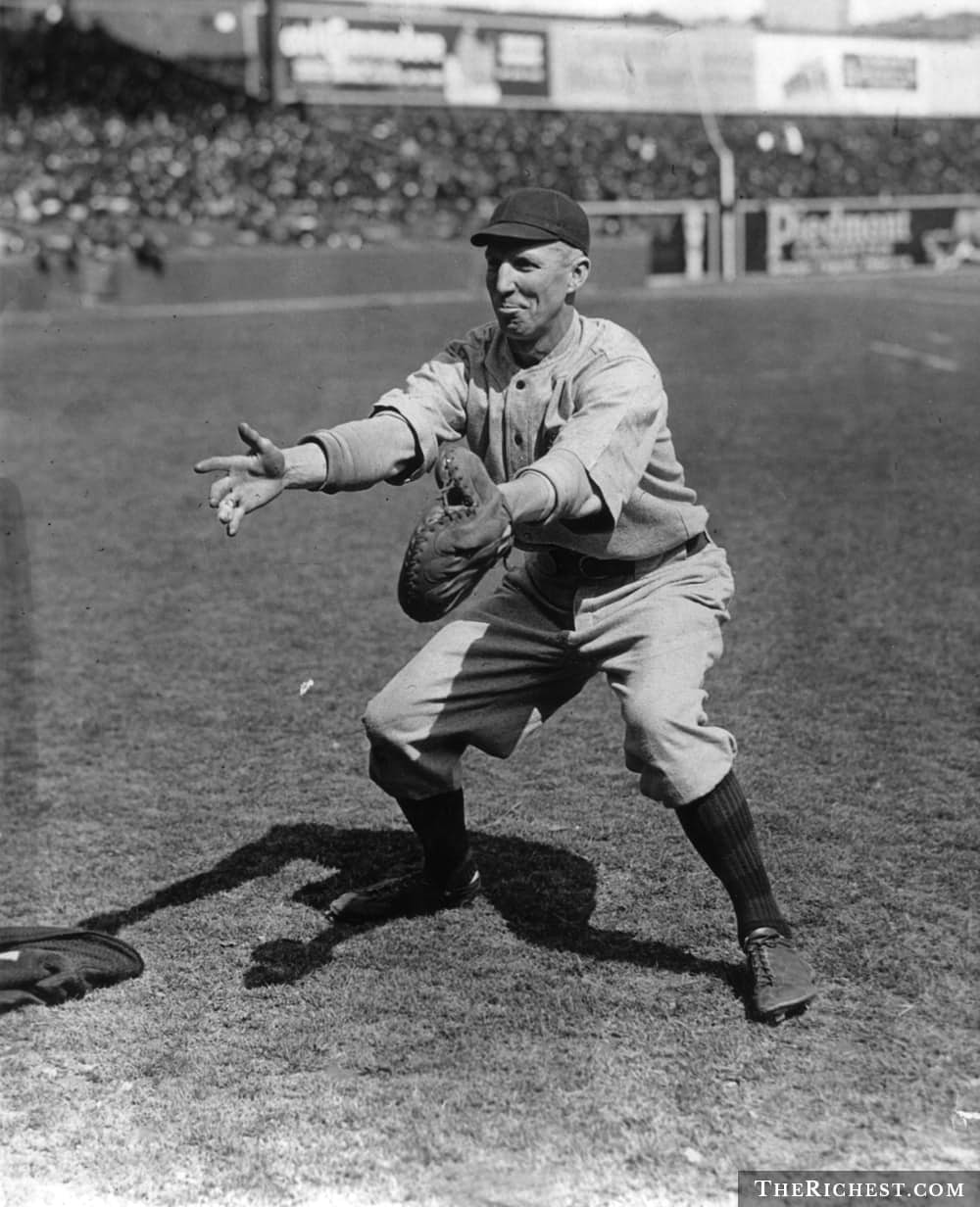
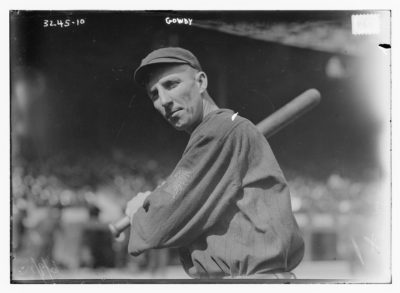
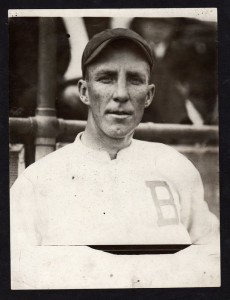
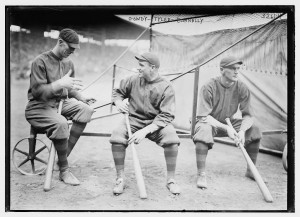
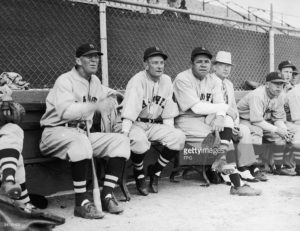
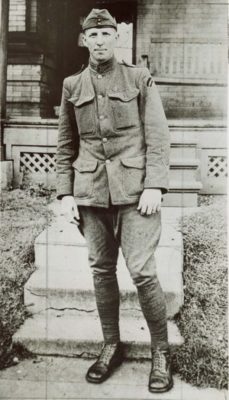
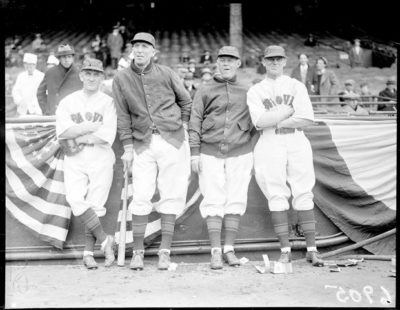
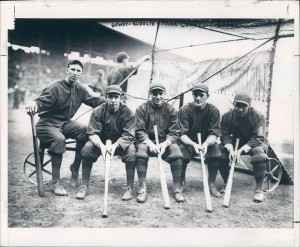
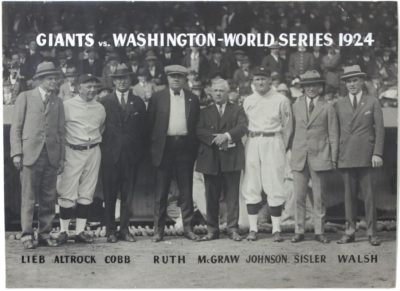
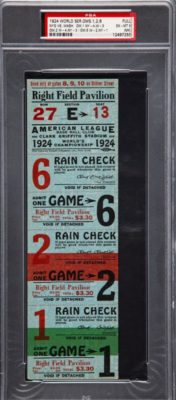
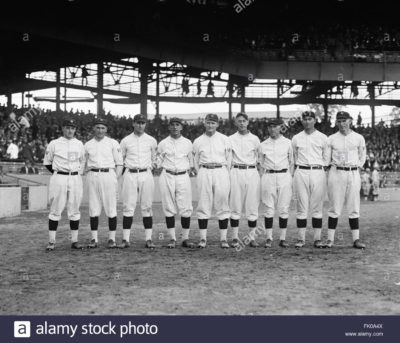
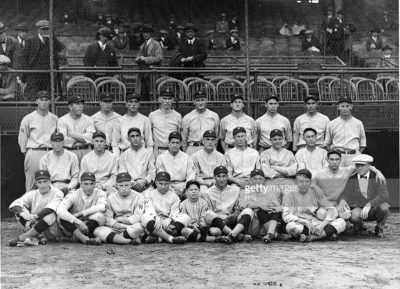
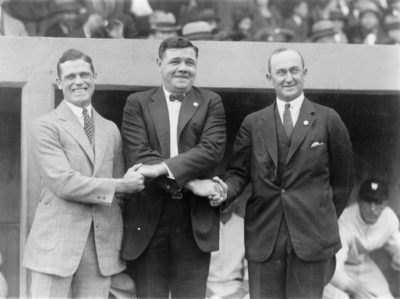
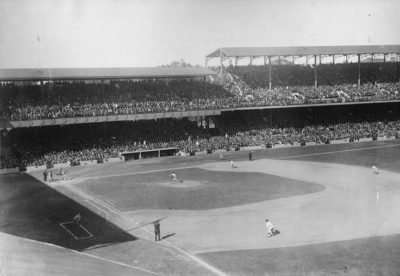
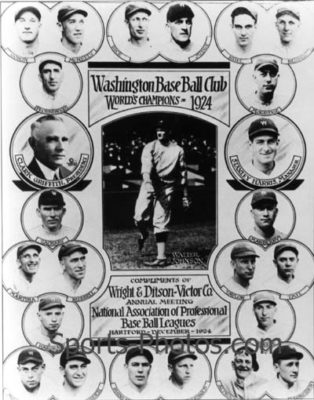
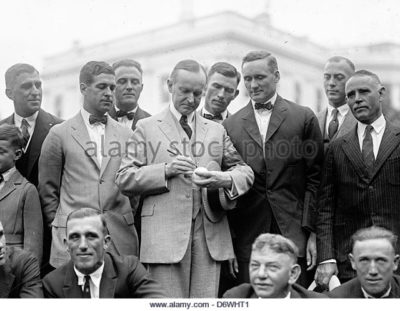
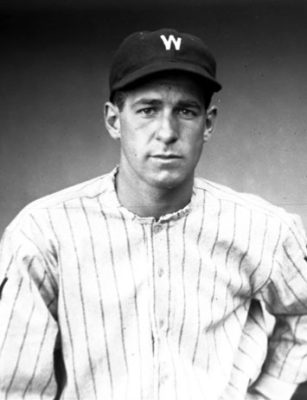
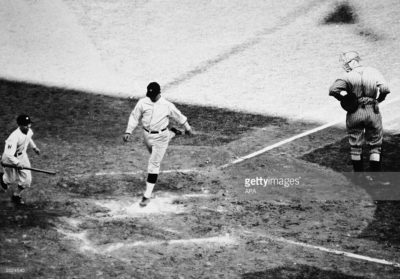
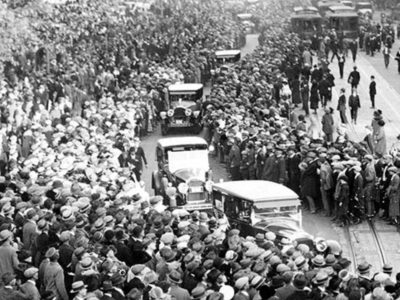
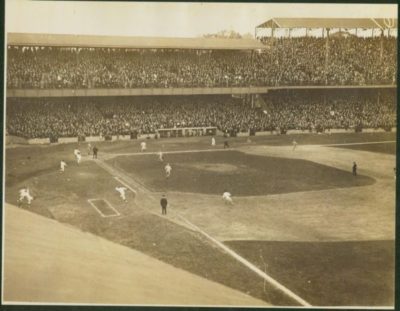
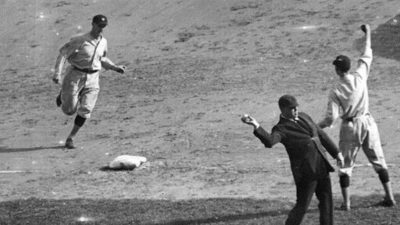
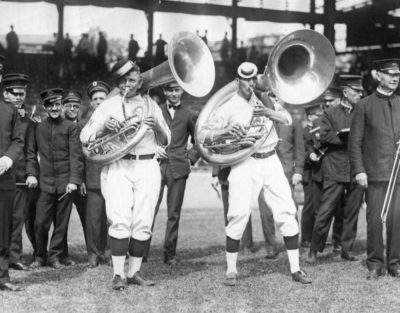
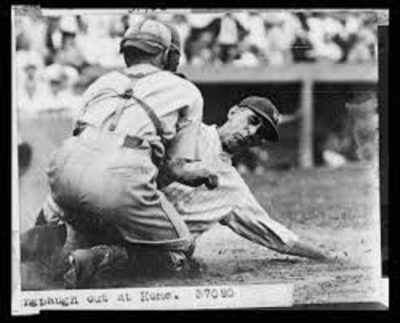
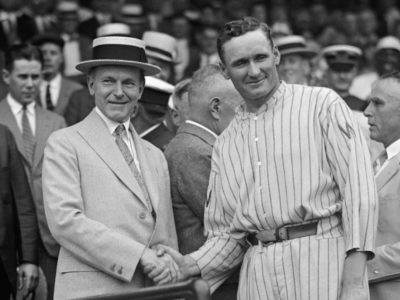
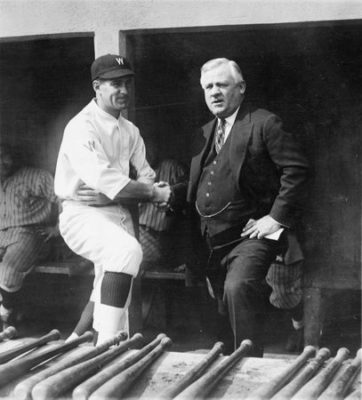
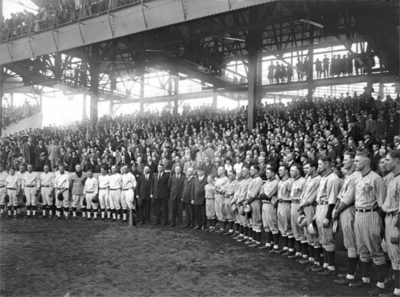
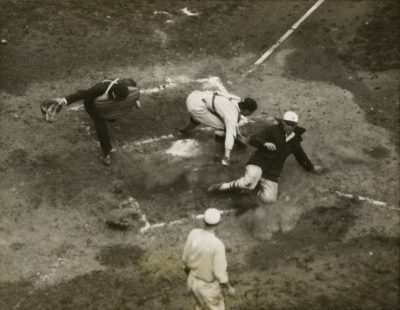
Future Hall-of-Famers in the 1924 World Series
Senators: Goose Goslin, Bucky Harris, Walter Johnson, Sam Rice.
Giants: John McGraw, Frankie Frisch, Travis Jackson, George “High Pockets’ Kelly, Freddie Lindstrom, Billy Southworth, Bill Terry, Hack Wilson, Ross Youngs.
Umpires: Tom Connolly, Bill Klem
Great telling of an interesting story. Thanks Gary!
Sure thing Mark…thanks!
I love this site@
Thanks for the kind words, Joe…glad to have you with us!
Loved the article. I recently purchased a ball signed by Harry Gowdy and this story will pair well with it. I also subscribed to your service.
Hi Jay- thanks for checking in. Please keep in touch!